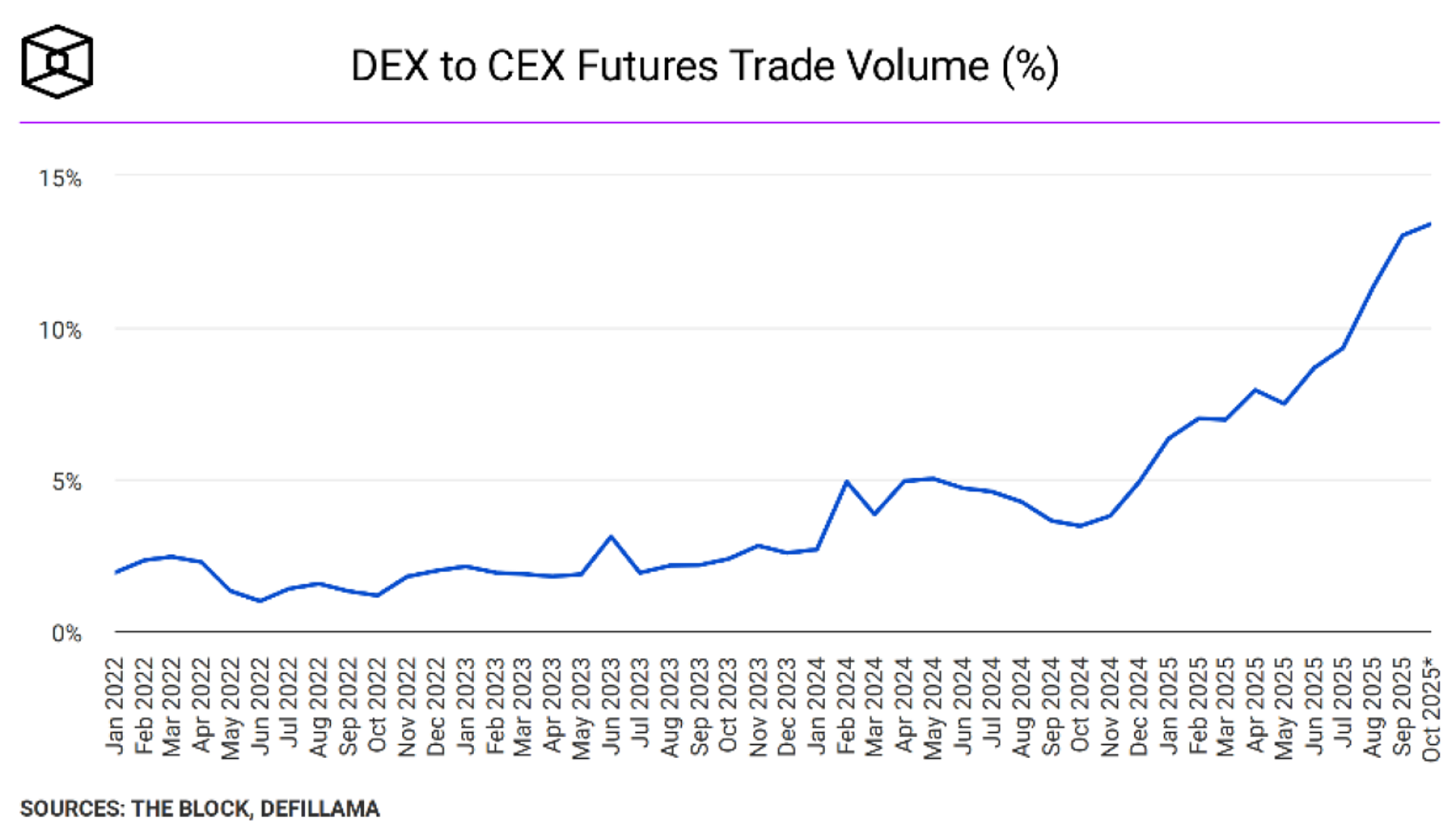The crypto trading revolution, led by Hyperliquid

22 October 2025
Since the first trading platforms appeared in the early 2010s, they have been among the most profitable parts of the crypto ecosystem. Exchanges that offer perpetual futures, ongoing futures contracts that often use leverage, are especially lucrative. But the way these markets are organized is starting to change.
Where trading was long dominated by centralized exchanges such as Binance, attention is now shifting to a new generation of platforms: decentralized exchanges (DEXs). On these exchanges, trading takes place transparently, directly on the blockchain.
From centralized to decentralized exchanges
Centralized exchanges share many similarities with traditional financial markets. Users deposit funds with an intermediary that executes transactions and maintains account balances. While this model is efficient, it diverges from the principles of Decentralized Finance, or DeFi.
Decentralized exchanges adopt a completely different approach. Instead of routing transactions through a central entity, all activity is recorded directly on the blockchain. Since the DeFi boom of 2020, developers have attempted to build systems capable of matching centralized exchanges in speed and liquidity. That goal long seemed unattainable, but recent developments have changed the picture entirely.
Data show that decentralized exchanges are rapidly closing the gap. In Amdax’s House View 2024, we anticipated this transition. It arrived somewhat later than expected, but 2025 has confirmed it decisively. The market share of decentralized exchanges in the derivatives sector has risen from around 5 percent to more than 14 percent of total trading volume. The name that stands out most prominently is Hyperliquid.

Figure 1: Decentralized exchanges are quickly capturing market share in the derivatives market.
Hyperliquid: a new generation of decentralized exchange
While many decentralized exchanges operate on existing blockchains such as Ethereum or Solana, Hyperliquid chose a different route by developing its own blockchain specifically designed for trading.
Every order, trade, and cancellation is recorded directly on the network. Thanks to its proprietary consensus mechanism, the system can process up to 200,000 actions per second. This provides traders with the speed and convenience they are accustomed to from traditional exchanges, but within an open and transparent infrastructure.
Hyperliquid also features the HyperEVM, a smart contract platform that functions similarly to Ethereum. Developers can build applications in a familiar environment while benefiting directly from the platform’s liquidity and trading activity. This enables new types of DeFi applications that were previously impractical, such as more efficient lending protocols.
Rapid growth of Hyperliquid
Hyperliquid’s innovative approach has proven highly successful. After a closed testing phase in 2023, the platform achieved a major breakthrough at the end of 2024 with the launch of its token, HYPE.
In the 18 months between its inception and the token launch, the platform processed 460 billion dollars in trading volume. In the 11 months that followed, total volume grew to 2.6 trillion dollars, with monthly activity regularly exceeding 200 billion and occasional peaks reaching 400 billion.
This growth has translated directly into revenue, as all trading fees flow to the protocol itself. In recent months, Hyperliquid has become one of the most profitable projects in the crypto sector, now accounting for nearly one third of all blockchain network revenues. It has generated more income in two years than all applications on Solana and Ethereum combined.

Figure 2: Hyperliquid now accounts for the largest share of network revenues in the industry.
A distinctive profit model
Ninety-nine percent of all trading revenue is used to buy back and permanently remove HYPE tokens from circulation. This mechanism allows the value generated by the platform to flow back into its ecosystem. Increasing trading volume therefore leads to greater demand for the token.
In October 2025, Hyperliquid recorded 100 million dollars in profit, equivalent to an annualized 1.2 billion dollars, achieved with only 11 employees. For comparison, Coinbase reported approximately 1.9 billion dollars in profit during the first three quarters of 2025 with more than 4,300 employees. Hyperliquid therefore ranks not only among the most profitable projects in the crypto industry but also among the companies with the highest profit per employee worldwide.
The project is entirely self-funded by its founders without any venture capital involvement. This reduces selling pressure on the HYPE token and strengthens community confidence, which often tends to be cautious toward venture capital influence. Through this organic growth, Hyperliquid has cultivated a loyal and highly engaged community, an essential factor in the fast-evolving digital asset market.
Nevertheless, long-term success is not guaranteed. Competition within the decentralized exchange market remains intense. Projects such as dYdX and GMX have demonstrated that dominance in this field is rarely permanent. To maintain its position, Hyperliquid will need to continue innovating both technologically and in terms of user experience.
Hyperliquid illustrates that a decentralized exchange is no longer an idealistic experiment but a fully functional alternative to centralized trading venues. If the team continues to ensure technological security and to expand liquidity, Hyperliquid could become a permanent fixture within the digital financial infrastructure.
As founder Jeff Yan has stated, “Hyperliquid is the evolution of finance. We will not have succeeded until it houses all of finance.”

Our website uses cookies
We use cookies to personalize content and advertisements, to offer social media features and to analyze our website’s traffic. We’ll also share information about your usage with our partners for social media, advertising and analysis. These partners can combine this data with data you’ve already provided to them, or that they’ve collected based on your use of their services.